
The global authority in superyachting
- NEWSLETTERS
- Yachts Home
- The Superyacht Directory
- Yacht Reports
- Brokerage News
- The largest yachts in the world
- The Register
- Yacht Advice
- Yacht Design
- 12m to 24m yachts
- Monaco Yacht Show
- Builder Directory
- Designer Directory
- Interior Design Directory
- Naval Architect Directory
- Yachts for sale home
- Motor yachts
- Sailing yachts
- Explorer yachts
- Classic yachts
- Sale Broker Directory
- Charter Home
- Yachts for Charter
- Charter Destinations
- Charter Broker Directory
- Destinations Home
- Mediterranean
- South Pacific
- Rest of the World
- Boat Life Home
- Owners' Experiences
- Conservation and Philanthropy
- Interiors Suppliers
- Owners' Club
- Captains' Club
- BOAT Showcase
- Boat Presents
- Events Home
- World Superyacht Awards
- Superyacht Design Festival
- Design and Innovation Awards
- Young Designer of the Year Award
- Artistry and Craft Awards
- Explorer Yachts Summit
- Ocean Talks
- The Ocean Awards
- BOAT Connect
- Between the bays
- Golf Invitational
- BOATPro Home
- Superyacht Insight
- Global Order Book
- Premium Content
- Product Features
- Testimonials
- Pricing Plan
- Tenders & Equipment


The ultimate J Class yachtspotter’s guide
The J Class is undoubtedly one of the most beautiful and powerful classes of sailing yacht in the world. An original fleet of 10 was constructed in the 1930s for the purpose of competing in the America’s Cup, but in a sad twist of fate, only a few were able to survive the cull for metal during World War II. Some were later salvaged from the scrapheap and rebuilt as modern-day racers while others were constructed as replicas by owners who admired their classic lines and racing credentials. Nine J Class sailing yachts race today but could you tell an original from a replica? Could you identify which J Class yacht is which by its sail number? Here's an essential guide to the J Class fleet...
Sail number : JK3 Length : 36.5m Year of build : 1929
With more than 80 years under her keel, Shamrock V is one of the most historic sailing yachts still afloat today having been built by Camper & Nicholsons in 1929. Her current owner bought Shamrock V in March 2016 and in the process inherited a legacy. This 36.58 metre is the original J Class yacht and the only one with a wooden hull to have survived to the present day. Her original owner Sir Thomas Lipton is remembered as the lovable loser of the America’s Cup , having unsuccessfully challenged on five separate occasions between 1899 and 1930, taking each defeat with characteristic good grace.
Sail number : JK4 Length : 39.56m Year of build : 1934
Endeavour was launched by Camper & Nicholsons in 1934 and is hailed as one of the most iconic sailing yachts in the world . Commissioned by Sir Thomas Sopwith, this 39.56 metre design was a highly rated contender heading into the 16th America’s Cup, but ended up losing 4-2 to Harold S. Vanderbilt's Rainbow . However, this is widely acknowledged to have been more down to tactics than design or performance. After spending the better part of 50 years languishing in obscurity, she was meticulously restored by Dutch yard Royal Huisman in 1989 and was most recently refitted in 2011 by New Zealand yard Yachting Developments .
Sail number : JK7 Length : 38.5m Year of build : 1933/2016
Velsheda was built in steel in 1933 for WL Stephenson, the chairman of Woolworths in Britain, and named after his three daughters Velma, Sheila and Daphne. This 38.5 metre yacht is the only original J Class not to have been built for the America's Cup . Between 1937 and 1984 she languished in a mud berth on the Hamble River before scrap-metal merchant Terry Brabant rescued her and chartered her on a shoestring budget with no engine, mostly in the Solent but also in the Caribbean. In 1996 she was purchased by Dutch fashion entrepreneur Ronald de Waal who commissioned Southampton Yacht Services to rebuild her. Since then de Waal has raced her extensively .
Sail number : J5 Length : 41.55m Year of build : 2003
Ranger is a 41.55 metre replica of the J Class yacht of the same name, which was built for the 1937 America’s Cup by a syndicate led by railroad heir Harold Vanderbilt. Starling Burgess and Olin Stephens had been asked to produce eight sets of lines and the one selected as most suitable for the conditions expected off Newport, Rhode Island — design number 77C — was one of Burgess', although Stephens later helped with some refinements. Known as 'The Super J', the original Ranger comprehensively beat Endeavour II in the Cup and won all but two of the other 33 races in which she competed that year. She never sailed after that and was broken up in 1941. With the design optimised by Reichel-Pugh , the new Ranger was built in steel — true to the original but unlike the subsequent modern Js — by Danish Yachts in 2003 for an American owner.
Sail number : JK6 Length : 42.1m Year of build : 2009
The reincarnation of the 1937 launch Endeavour II , Hanuman was launched in 2009 by Dutch shipyard Royal Huisman . This 42.1 metre yacht features her predecessor’s original Charles E. Nicholson design, while the underwater geometry is courtesy of Dykstra Naval Architects . After completing the rebuilds of Endeavour , Shamrock V and Velsheda , Hanuman was Dykstra's first J Class new build project. Commissioned by serial yacht owner Jim Clark , Hanuman is named after the son of the Hindu wind god, which it flies on its spinnaker, and her regatta performances have backed up this name. She took first place at the 2017 St Barths Bucket , which saw six J Class yachts battling it out on the high seas.
Sail number : JH1 Length : 43.4m Year of build : 2010
Lionheart is based on Burgess and Stephens design number 77F, which was one of those rejected in favour of 77C for the 1937 America’s Cup. However, after extensive research by Hoek Design Naval Architects , 77F was considered to be the best set of lines for the variety of racing conditions likely to be encountered at regattas around the world today. Lionheart was built in aluminium by Bloemsma and Claasen Jachtbouw in Holland, and was launched in the summer of 2010. Her first owner's business commitments forced him to sell her and she was purchased in mid-2011 by Dutchman Harold Goddijn, the founder of Tom Tom. At 43.4 metres overall and with a stunning 17 metre overhang, she is the second longest J afloat. Lionheart became the first Hoek-designed J to hit the race course and made its debut at the Superyacht Cup in Palma.
Sail number : JH2 Length : 39.96m Year of build : 2012
The original Rainbow was launched in 1934 at the Herreshoff yard in New England after a mere 100 days under construction and went on to win the America’s Cup in the same year. However, she was requisitioned during World War II and eventually scrapped. The modern Rainbow is an altogether more high-tech affair — built at Holland Jachtbouw in 2012 as the fourth of the new generation Js. She was built for an experienced sailing yacht owner to a design by Dykstra Naval Architects and is the first J to be fitted with a hybrid propulsion and power system. Rainbow is currently listed for sale . When heeled over, its red underside is a dead giveaway for yachtspotters out there.
Sail number: J8 Length : 42.62m Year of build : 2015
Topaz is based on an unbuilt 1938 design by Frank C Paine, the son of the three-time America’s Cup winner General Charles J Paine. Her modern aluminium incarnation measures 42.62 metres and was launched by Dutch yard Holland Jachtbouw in 2015. Hoek Design Naval Architects, who styled Topaz inside and out, describe her as “a good all-round performer”. She was the longest J by waterline length at the time of her launch but was later dethroned by Svea .
Sail number : JS1 Length : 43.6m Year of build : 2017
The newest and longest member of the J Class fleet, Svea was launched by Dutch yard Vitters in February 2017 measuring 43.6 metres. Her design by Hoek Design Naval Architects incorporates an integrated traditional long keel from the original 1937 drawings by Swedish designer Thore Holm, which were unearthed by yachting historian John Lammerts van Beuren. However, the designers have brought the 75-year-old design right up-to-date with an aluminium hull and 53.75 metre carbon fibre main mast. As a result, Svea displaces just 182 tonnes — two tonnes less than Hanuman and six tonnes less than Ranger .
Sign up to BOAT Briefing email
Latest news, brokerage headlines and yacht exclusives, every weekday
By signing up for BOAT newsletters, you agree to our Terms of Use and our Privacy Policy .
More about this yacht
More stories, most popular, from our partners, sponsored listings.
- Trending Topics:
- Yacht Industry
- Absolute Yachts

© Carlo Borlenghi
J Class Svea completes title hat trick at Maxi Yacht Rolex Cup
- Maxi Yacht Rolex Cup
After finishing second on the first coastal race behind the successful Swan 115 Moat – winner at the regatta last year and at the summer’s Giorgio Armani Superyacht Regatta on the same Costa Smeralda waters, Svea clinched the overall title on count back. Even then the overall class victory was down to their slender winning margin of just 28-seconds earned over the 31-nautical miles course clockwise around La Maddalena and Cabrera islands.
Svea finished second on the first coastal race which was won by the big NautorSwan, only just pipping the persistent Velsheda by 17-seconds after a thrilling head to head all the way around the route through the beautiful La Maddalena Islands archipelago. The pinnacle regatta was blighted somewhat by the strong Mistral which blew through most of the week, allowing only these two races to be contested.
After two days of waiting the first coastal was on Wednesday morning in perfect conditions – starting in 11kts, peaking at 13kts but the breeze fading to seven - whilst Saturday’s finale was a test of crew work and speed in the brisk conditions, 13-24kts of W’ly wind meaning a beat up the so called ‘bomb alley’ and broad reach down the outside of the islands to finish back off Porto Cervo on the Yacht Club Costa Smeralda finish line.
After winning the J Class twice in a row, in 2022 and 2023, this is Svea’s third successive victory at the Maxi Yacht Rolex Cup.
Svea’s boat captain Paul Kelly enthused “Today [Saturday] we managed to extend on Velsheda all the way up and around the top but on the downwind they had some serious, serious boat speed. We thought they were going to roll us at the finish but we managed to hold them off. It was enough for the overall win, three years in a row we are super, super happy. Time on water is key for us and having a game plan and sticking to it. That is what we do. Moat was gone on the reach but we ate into her on corrected time.”
Tom Dodson, tactician on Velsheda reported, “We had a clean day today [Saturday] but we got our timing wrong before the start and Svea got a much better start than we did, on our bow. We had a sniff of Svea up the first short beat – at 1.8 miles it was pretty short and so it was only a sniff, we got to the layline too quickly and from there it was just trying to see if we could keep it tight and wait for them to make a mistake. We got into them a little on the downwind. Once the boat speed is over 11kts, Velsheda is enjoying it, but it was one of those courses where you could catch up but unless you could find somewhere to catch up there would always be a corner they could push you back into.”
“It is a shame but I think the race committee did the best they could, it was always going to be tight to get more than a couple of races in. They did that and looking after these boats is pretty important too, you don’t want to be out there breaking gear or people.”
Greenline Yachts at Cannes show with the Greenline 58 Fly Hybrid
Next generation set to shine at the youth america’s cup, related posts.

Svea and Velsheda set to line up at showcase Maxi Yacht Rolex Cup

- America’s Cup
One month until the J Class Barcelona Regatta will see J’s take centre stage during the America’s Cup

Svea finish on top at The Superyacht Cup Palma

Before the J Class yachts came into existence, yachts were designed to be bigger and bigger. The towering rigs of the Big Boat Class such as ‘ Lulworth ’ and ‘ Britannia ’ dwarfed all other yachts. The late 1920s heralded discussion and agreement of the Universal Rule. This new formula controlled the size and displacement of the new yachts, enabling them to be raced as evenly as possible. Almost immediately, designs were being commissioned for the new, massive ‘Bermudan rigs, with no bowsprits’.
The rule was based on ideas proposed by Nat Herreshoff allowing waterline length to be increased without sail area being restricted, as it had been under the International Rule. This was compensated by a larger displacement and so draught was limited to 15ft.
In 1929 Sir Thomas Lipton, owner of Lipton’s famous for his import of Lipton Tea from India, issued his fifth challenge to the Americans for the America’s Cup. He commissioned the build of the first J Class Yacht which signified the start of a new era in design evolution and racing. On each occasion he challenged for the America’s Cup as a member of the Royal Ulster Yacht Club in Northern Ireland. RUYC are still involved with The Cup – presenting the Royal Ulster Cup to the Club of the winning challenger.
The Universal Rule came into effect in 1930. The size of a yacht was determined (by waterline length) and this was shown as an alphabetical list. “J” signified yachts with a waterline length of between 75 to 87 feet. The addition of the new design Bermuda mast allowed the yachts to carry a huge sail plan. Nothing so large and ‘awesome’ had been built previously. The Americans had a distinct advantage over Britain in the 1930 America’s Cup. They had the money to build four J’s over Britain’s one, yet the British yacht, Shamrock V was a hot contender. She was designed by Nicholson and built at the family yard in 1930, and before she crossed the Atlantic to attend the Cup she had notched up more than 700 sea miles (1,296km), won 15 out of the 22 races she had entered and had been tweaked and tested to a high degree.
In answer to Lipton’s challenge of 1929 the Americans designed four J-Class yachts as possible defenders. Enterprise, Whirlwind, Yankee and Weetamoe were launched within a month of each other; Weetamoe and Enterprise from the Herreshoff yard and Yankee and Whirlwind from Lawley & Son’s yard in Bristol.
Whirlwind, the second J, was the most revolutionary of the four. Francis L Herreshoff had moved away from conventional yachts and designed a boat, which took the new rule to its extreme. Whirlwind combined many new ideas and Herreshoff experimented with hull shape and rig. She was the longest of the early J’s at 86ft on the waterline and remained so until Ranger and Endeavour II were built in 1937.

She was built of semi-composite construction (the other three American Js were built out of the highly expensive Tobin bronze), was double-ended and had a permanent backstay. Uffa Fox described her profile as: “Very pleasing to the eye, the stem sweeping down to the keel in a very sweet line, and to a man who, like myself, believes that a pointed stern is a logical ending for all vessels, her stern is a joy to behold.” He predicted, “If the Yacht Racing Rules govern well and wisely, we shall see Whirlwind racing 50 years hence. If they do not she will probably be cruising then.” But Whirlwind met an early demise. Her building was delayed as she didn’t meet Lloyd’s A1 scantling rules and she wasn’t chosen to be the 1930s defender. She was often out-performed when close hauled, her steering gear making her difficult to steer. She was eventually scrapped along with Enterprise in 1935. However, her unusual double-headsail rig was later adopted by the rest of the Js.
The third American J, Yankee, was the best all-rounder. At 84ft on the waterline and 125ft length overall, she was solidly made of Tobin bronze and was extremely well balanced. Designed by Frank Paine , Yankee had an almost straight sheerline and easy lines. She was a powerful contender for defender, but not fine-tuned enough to succeed. She did, however, take part in the 1934 America’s Cup trials and with alterations to her rig, to carry more sail, and bow, which was lengthened and made more of a V-shape, she then proved more successful, especially in light winds.
The fourth of the American J’s was Weetamoe, which was designed by Clinton Crane and was the narrowest of the early four. Despite claims that Yankee was the best all-rounder, Weetamoe is said to have been the closest rival to Enterprise to be the Cup defender. Charles Nedwick, in Ian Dear’s book Enterprise to Endeavour, describes Weetamoe as having a profile “that is practically a triangle, with a straight line from the after end of the waterline to the bottom of the keel and thence a line which is slightly convex, and then slightly concave to the forward end of the waterline.” In an attempt to better performance and make her less tender, her profile below the water was radically altered in 1934 with a new contour and bulb keel. The alterations failed and not long afterwards were reversed. In common with the other J’s, she had about 43ft of overhang and her hull, Nicholson opined, “was the best of all the US Js”.
When Shamrock V and Enterprise eventually met off Newport, Rhode Island, later that year, the two J’s were well matched in hull profile, but differed significantly in rig. Enterprise’s rigging was lighter, she had the Park Avenue boom, which was so advantageous to windward, and had lots of winches on board. Shamrock V meanwhile, was under-winched and hard work to sail. She has since, however, proved her success in that she is still sailing today.
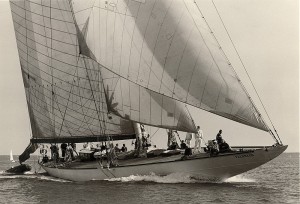
The sixth J-Class yacht to be built, and the second built on British soil was Velsheda . She was the only J not built as a contender for the America’s Cup. Her owner, WL Stephenson, who previously owned White Heather II, the 23-Metre converted to rate as a J-Class in 1930, had Velsheda built in steel in 1933 at the Camper & Nicholson yard. Velsheda was a great success. In 1935 she was significantly altered, her bow was snubbed around the waterline and her stern improved. The following season she won the King’s Cup at Cowes Week.
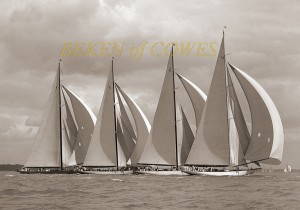
In 1934, Sopwith challenged for the America’s Cup. His challenger was Endeavour . She was Charles Nicholson’s third J-Class design and he said of her “She will have quite a normal hull… because I have thought it right to suppress possible experimental form, which would be most interesting to try out, but which I have to leave to American designers.” He did, however, produce the most beautiful J-Class and her rig was innovative.
Sopwith experimented with new running backstay strain gauges, which controlled the trim of the mast and used electronic windspeed and direction indicators. It has since been suggested that part of the reason for her failure in the Cup was due to all the gadgets on board. She was matched 83ft 3in on the waterline against Rainbow ’s 82ft. However, despite being thought to be the best challenger Britain has ever built, she did not win the Cup. Rainbow, which was considered the inferior boat, beat her by four races to two.

Rainbow was designed by W Starling Burgess and launched in 1934 from the Herreshoff yard where she was built in just 100 days. The J stepped a pear-shaped duralumin mast, designed to take the strain of the double-headed jib – first used on Whirlwind – and she was originally rigged with a Park Avenue boom. This was later removed because it was considered too heavy.
The UK Class was depressed with the death of King George V and scuttling of his yacht “Britannia” off the South of the Isle of Wight, in accordance with his will.
Of the American Js, Yankee was the only one to sail in British waters when she was bought by Gerald Lambert and crossed the Atlantic in 1935. She was scrapped in 1941. Enterprise and Whirlwind were both scrapped in America.
1937 saw the building of the last two J’s on both sides of the Atlantic. Both Ranger and Endeavour II took the waterline length to its extreme, measuring 87ft LWL . Ranger, the American boat, was built at Bath Ironworks in Maine and designed jointly by W Starling Burgess and Olin Stephens . It was a design combination, which produced the greatest J of the fleet – the ‘super J’ as she was later known. She was built, for the cost of the materials only, of flush riveted steel plating and soon after launching had an accident. The upper parts of her rod rigging which stayed her duralumin mast shook loose and her mast snapped “with a report like a cannon”.
Ranger’s success on the water was widespread. Of 37 starts she won 35. Owner-skipper Harold Vanderbilt described her as being “slower to turn and to pick up speed, but (she) held her way longer, and was perfectly balanced on the wind.” The challenger, Endeavour II, was designed by Nicholson again and built at the C&N yard. She too was steel, but flush-plated above and below the waterline. Sopwith towed her and Endeavour, plus an entourage of 100, to America where he worked on tuning her rig. Sadly, Ranger saw off the competition, easily winning four races, and dashing British hopes.
Although they became recognised the most beautiful yacht design in the world, only 10 J Class yachts were ever built – 6 in the USA and 4 in the UK. Most of these competed in trials for the America’s Cup, or competed in the Cup itself. Several existing large British yachts, ‘ Astra ’, ‘ Candida ’, ‘White Heather II’ and ‘Britannia’, the King’s yacht, were all converted to comply with the rule and raced alongside the J’s.
After the victory of Ranger over Endeavour II, Vanderbilt wondered whether the boat was so much faster than the competition that it might kill the class. History would show this was not the case as analysis of the Holm design shows that it would likely have been faster than Ranger.
1937 marked the end of an era – it was the last America’s Cup contest for 21 years and marked the end of Big Yacht racing. Shamrock V was sold to Mario Crespi, the Italian Senator and publisher, who converted her to a ketch rig and renamed her ‘Quadrifoglio’, with a literal translation giving her authentic name of ‘4 leaves’ in Italian. This was in accordance with an Italian law, which forbade foreign names.
Weetamoe was scrapped in this year, while at the end of the season Ranger was laid up, prior to being scrapped in 1941.
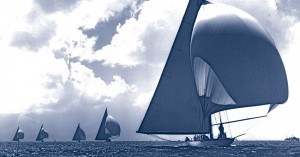
HANDLING THE J CLASS YACHTS IN THE 1930’s
The Skippers had to be experienced in racing and their skill on the race circuit became a matter of pride. These mighty craft had no engines and they had to be handled with great precision to get into and out of ports. Often their experience came from sailing all types of small craft, including fishing boats, during the winter months, when the J Class yachts were laid up. The permanent racing crew in the early days was probably around 16 men thou this may have been augmented to around 30 for racing. When not required for sail changes, spare crew were often moved to below decks.
With the incredible loads on the rigging and systems it was a constant concern that J Class masts could collapse in winds above a Force 3.
Sailing small boats in often inhospitable waters gave them the skills to manage their J Class yachts. The same is true today. Skippers have to deliver their yachts across Oceans, and compete around the race course, using their skills and all the technical advantages that are available today.
It is now clear that there was another J Class Yacht under development in 1937. Several years ago, drawings for a J-Class boat by Swedish naval architect Tore Holm were discovered by Fred Meyer, (Société Nautique de Genève – the Defender of the 32nd America’s Cup).
Now known as the Holm Project, this was to be a Swedish yacht with an innovative design. Many of the hull plates were made – and exist to this day. The project was put on hold prior to the outbreak of War in 1939 and was forgotten for more than 60 years. Endeavour and Endeavour II (K6) were laid up at Camper & Nicholson’s yard in Gosport, England.
Rainbow was scrapped. By the end of 1941, all the US yachts, which had been laid up were scrapped for their metal, with the last two being Yankee and Ranger. None survived. Yankee’s owner Gerard Lambert allegedly donated her scrap money from the yacht to Queen Mary to be used at her discretion in the London Hospital, in memory of the courtesies shown to Yankee by King George and the Queen herself.
Endeavour II was sold for scrap to Charles Kerridge Limited but her hulk remained until the late 1960s. Endeavour and Velsheda became houseboats in a mud berth on the River Hamble. This is where they stayed for more than 30 years, protected by the mud, which they had sunk into. Only Shamrock V was still sailing.
Endeavour II was broken up and scrapped in Southampton. Quadrifoglio (Shamrock V) had been hidden in Italy in a barn throughout the war years and following Crespi’s death in 1962 was sold to Piero Scanu, who saved her just two weeks before she was due to be broken up in Genoa.
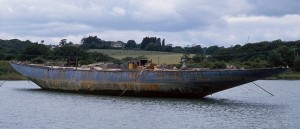
During the 1970s Endeavour’s hulk was sold for £10 and restoration was started.
Quadrifoglio (Shamrock V) arrived from Italy and was refitted at Camper & Nicholson’s yard where she had been built, supervised by Paolo Scanu the naval architect, and son of the owner.
The large holes in Endeavour’s hull were plugged and she was towed to the old seaplane base at Calshot Spit on the Solent to start restoration.
Terry Brabant rescued Velsheda from her Hamble mud berth and gave her enough of a refit to get her chartering and, occasionally, racing again in events like the annual Round the Island Race, hosted by the Island Sailing Club in Cowes. Despite being in rather poor condition she still acquitted herself well and looked magnificent from a distance. Swiss plans to restore her came to nought and the old racing yacht was eventually laid up afloat in Gosport. Elizabeth Meyer took on the challenge to continue with the rebuild of Endeavour at Calshot.
Quadrifoglio (Shamrock V) was purchased in 1986 by the Thomas Lipton Company, and given back her original name of Shamrock V, when she became the property of the Newport Museum of Yachting. Endeavour was towed from Calshot, to Cowes on the Isle of Wight to have her fittings and rigging fitted. She was then taken on a barge to the Royal Huisman Shipyard in Holland to continue and complete the rebuild.
Endeavour was relaunched in Holland. Endeavour and Shamrock V match raced each other over the Old America’s Cup course in Newport, Rhode Island in August.
Velsheda was purchased from a bankrupt C&N boatyard and brought to Southampton Yacht Services to start her rebuild. She was relaunched in 1998 and started her programme of racing and cruising around the World.
Velsheda, Shamrock V and Endeavour raced against each other in Antigua Classic Week.
The Owners met in England and formed the J Class Association to protect the interests of the Class, present and future. Class Rules were established for the construction of Replica Rebuilds from original plans. Shamrock V came out of a major refit at Pendennis in Falmouth under the supervision of the Dykstra office.

The first J Class Regatta is held in Christchurch Bay on England’s south coast over three days, followed by the Jubilee Regatta in Cowes.
Ranger replica was commissioned and construction started at Danish Yacht Shipyard.
Ranger was launched and started her racing programme.
Replicas of Endeavour II (Hanuman) and Ranger (Lionheart) are commissioned.
Replicas of Rainbow and Paine design (JH7) are commissioned.
Hanuman, replica of Endeavor II launched.
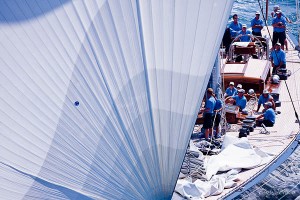
Lionheart launched.
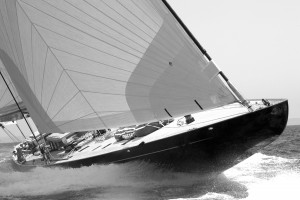
Rainbow launched. Cheveyo commissioned from Sparkman & Stephens / Spirit Yachts.

Information courtesy of the J Class Association
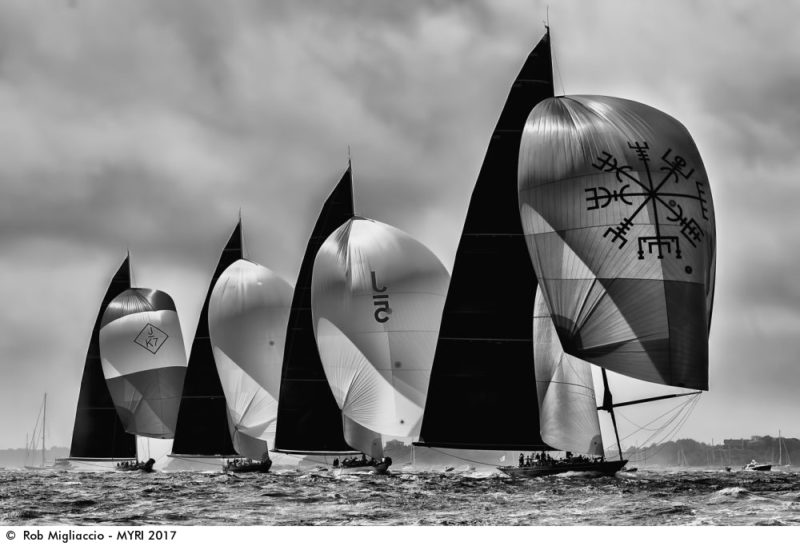
Svea, Velsheda and Topaz at the St Barths Bucket, 2018.
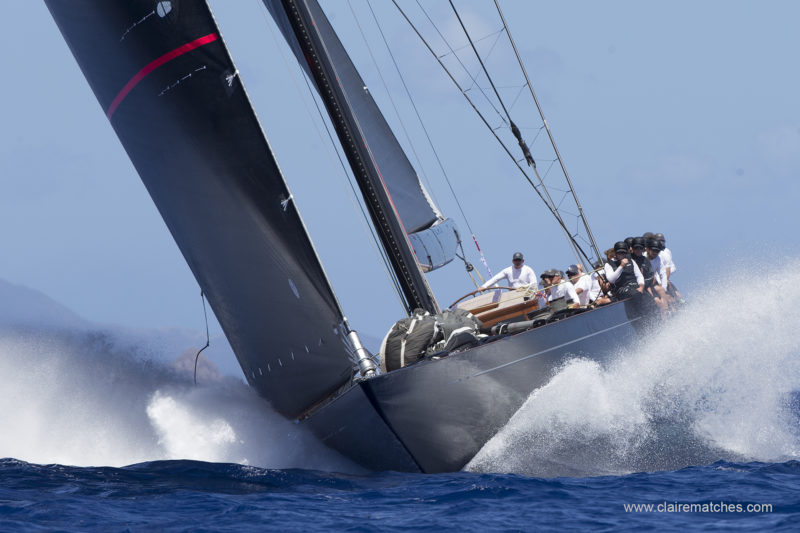
SHARE THIS:
- Yachts for Sale
Recently updated...
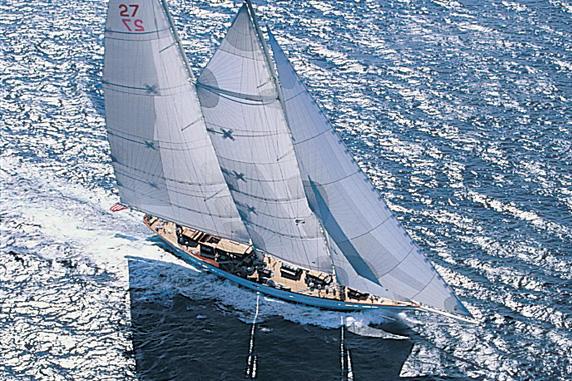
Write an Article
Covering news on classic yachting worldwide is a tall ask and with your input Classic Yacht Info can expose stories from your own back yard.
We are keen to hear about everything from local regattas and classic events to a local restoration or yachting adventure. Pictures are welcome and ideal for making the article more engaging.
With a site that has been created with the assistance of an international group of classic yacht enthusiasts we value your input and with your help we strive to make CYI more up-to-date and more informative than ever.
Please register and get in touch if you would like to contribute.

choose your language:
We’re passionate about Classic Yachts here at CYI, and we welcome submissions from all over the globe!
Captain, rigger, sail-maker or chef – if you’d like to write for CYI just let us know!
Email [email protected] to be set up as a Contributor, and share your Classic thoughts with the world.
ClassicYachtInfo.com has the largest database of classic yachts on the internet.
We’re continually working to keep it accurate and up-to-date, and we greatly appreciate contributions of any type. If you spot an error, or you have some information on a yacht and would like to contribute, please jump on in!
Don’t be shy…. Breeze on!
- Sell Your Yacht

- AMERICA'S CUP
- CLASSIFIEDS
- NEWSLETTERS
- SUBMIT NEWS

The oldest video footage of J Class yacht racing
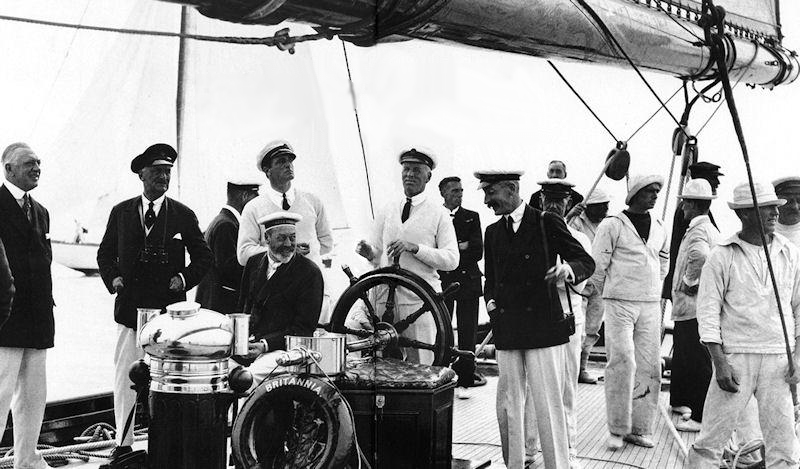
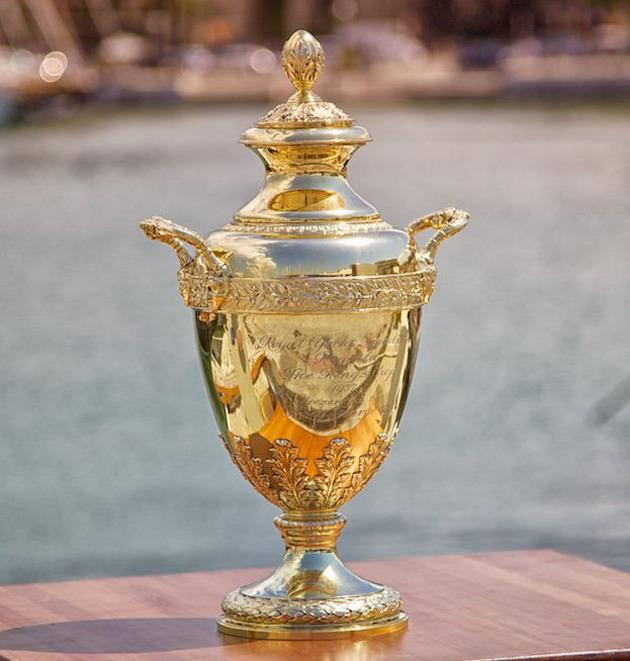
Related Articles
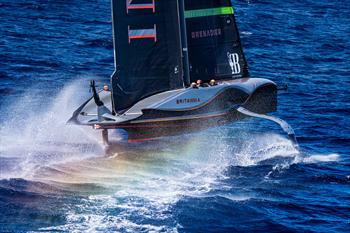
Upcoming Events

- Ranger History
- The New Ranger
- J Class Association
- Crew Profile
- Latest News
- Contact Details
Yachting World

A stunning superyacht showdown in Palma

Superyacht Cup Palma: Fleet of Js set to race

The purist’s America’s Cup – the story of the seven-strong J Class Regatta in Bermuda

J Class picture highlights: spectacular images of 7 J Class sailing together at the 35th America’s Cup

A spectacular day as seven J Class yachts race for the first time ever
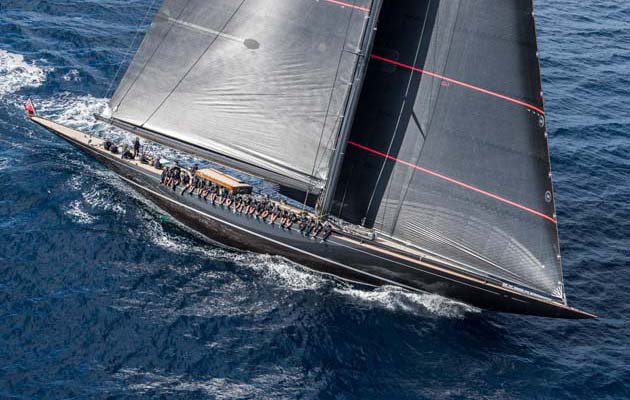
Inside J Class yacht Svea – what it’s really like to race on board the newest member of the fleet


Svea rules the day and Lionheart wins the J Class Superyacht Regatta in Bermuda
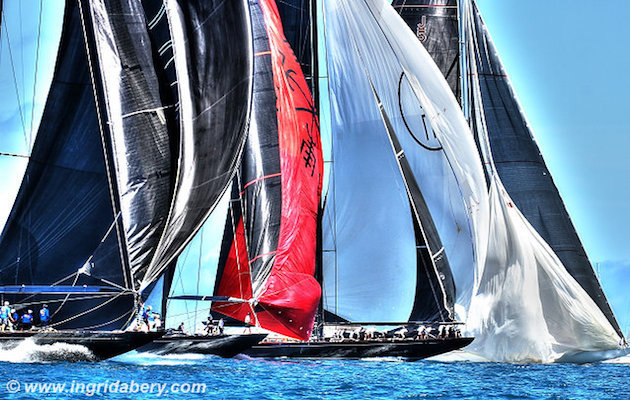
Brand new J S1 Svea stars in a record J Class racing fleet at America’s Cup
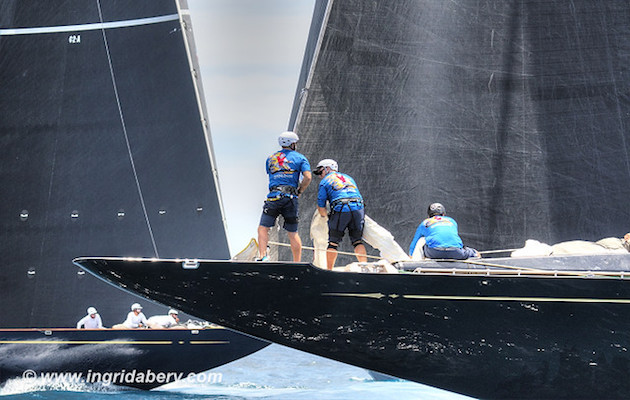
The J Class brings timeless elegance to the America’s Cup during their first day’s racing in Bermuda

Highlights and amazing images from St Barth as six J Class yachts race each other for the first time

The new heyday of the J Class – why this illustrious class is now more popular than ever
J class videos.

Video – a beautiful film of the J Class racing during the RYS Bicentenary regatta

Video: All the J Class action from Falmouth, as Velsheda, Ranger and Lionheart put on a show

Video – the timeless elegance of the J Class. Velsheda, Ranger and Lionheart dance on Falmouth waters
The 5 j’s battle it out in palma, 5 j-class race – video.

Videos: J Class Falmouth Regatta
J class pictures.

Three J Class yachts are racing in Falmouth – see the pictures and highlights from the first race here

J Class Regatta Solent

J Class Regatta Falmouth Day 3

J-Class UK regatta Falmouth Race 2

J Class Regatta Falmouth Race 1

J Class Regatta Falmouth Training
Lysanderhöhe (Am Trakt Mennonite Settlement, Samara Oblast, Russia)
Lysanderhöhe was a village of the Am Trakt Mennonite settlement in the province of Samara , Russia , founded in 1864, consisting in 1897 of 22 farms, with a population of 119. A part of the population joined the trek to Turkestan in 1891, while others immigrated to America. In 1914 the population was 146. Franz Bartsch , the author of Unser Auszug nach Mittelasien, was the teacher of the village school. After the Revolution of 1917 the cultural and economic level of the village began to decline. Some of the inhabitants went to Canada and others were exiled. Little is known about the fate of those who remained and the later status of the village.
Bibliography
Dyck, Johannes J. based on a text by W.E. Surukin. Am Trakt: A Mennonite Settlement in the Central Volga Region . Translated by Hermina Joldersma and Peter J.Dyck. Winnipeg: CMBC Publications, 1995.
Hege, Christian and Christian Neff. Mennonitisches Lexikon , 4 vols. Frankfurt & Weierhof: Hege; Karlsruhe: Schneider, 1913-1967: v. II, 709.
Surukin, W. E. und Johannes J. Dyck. Am Trakt, Eine Mennonitische Kolonie im Mittleren Wolgagebiet .North Kildonan, Man., 1948.
| Author(s) | Cornelius Krahn |
|---|---|
| Date Published | 1957 |
Cite This Article
Krahn, Cornelius. "Lysanderhöhe (Am Trakt Mennonite Settlement, Samara Oblast, Russia)." Global Anabaptist Mennonite Encyclopedia Online . 1957. Web. 19 Sep 2024. https://gameo.org/index.php?title=Lysanderh%C3%B6he_(Am_Trakt_Mennonite_Settlement,_Samara_Oblast,_Russia)&oldid=144294 .
Krahn, Cornelius. (1957). Lysanderhöhe (Am Trakt Mennonite Settlement, Samara Oblast, Russia). Global Anabaptist Mennonite Encyclopedia Online . Retrieved 19 September 2024, from https://gameo.org/index.php?title=Lysanderh%C3%B6he_(Am_Trakt_Mennonite_Settlement,_Samara_Oblast,_Russia)&oldid=144294 .
©1996-2024 by the Global Anabaptist Mennonite Encyclopedia Online. All rights reserved.
Navigation menu
An annual calendar of racing is in place for the J Class fleet which sees the fleet compete at premier regatta's throughout the year.
The Superyacht Cup Palma
The Superyacht Cup Palma, established in 1996, is Europe's longest running superyacht regatta. The annual event attracts some of the world’s largest and most prestigious sailing yachts to the beautiful island of Mallorca for a spectacular festival of sailing.The Superyacht Cup combines professionally managed yacht racing in reliable sea breeze conditions on the Bay with a relaxed and fun atmosphere ashore in the heart of historic Palma, the home of Mediterranean superyachting.
Image Credit:
Sailing Energy
Maxi Yacht Rolex Cup
The Costa Smeralda provides a stunning setting and a variety of challenging conditions for the Maxi Yacht Rolex Cup, one of the highlights of the Mediterranean yachting season. The first Maxi Yacht Rolex Cup (known then as the Maxi World championship) was held in Sardinia in 1980. The brainchild of the Yacht Club Costa Smeralda and its president, the Aga Khan, the regatta is now an eagerly anticipated annual event attracting a sizeable fleet of majestic maxi yachts to Porto Cervo each September.
Image Credit: Francesco Ferri / Studio Borlenghi
J Class Barcelona Regatta
No history of the America’s Cup is complete without mention of the J Class, the magnificent sloops that competed for the trophy in three editions between 1930 and 1937.
These yachts with their remarkable history both in theAmerica’s Cup and into the modern era are one of the true wonders of the sailing world and will draw much attention when they arrive in Barcelona whilst acting as an integral part of the America’s Cup celebrations.

This site uses cookies to enhance your experience. By continuing to browse the site, you consent to the use of cookies. View our Privacy Policy for more information.

IMAGES
VIDEO
COMMENTS
The J Class Association was founded in 2000 to protect the interests of the Class, present and future, and organises an annual calendar of racing for these magnificent yachts. 2024 Calendar. 19-22 June.
J Class yacht Velsheda sailplan. LOA: 39.25m/128ft 9in · LWL: 27.8m/91ft 3in · Beam: 6.57m/21ft 7in · Disp: 180 tonnes. Original lines: Charles E Nicholson. Modified design: Dykstra Naval ...
J Class yachts Velsheda, Topaz and Svea downwind legs. The J Class is one of several classes deriving from the Universal Rule for racing boats. The rule was established in 1903 and rates double-masted racers (classes A through H) and single-masted racers (classes I through S). From 1914 to 1937, the rule was used to determine eligibility for ...
The J Class - so named because it was the letter allocated to its particular size by the Universal Rule to which the yachts were built (K and M Class yachts were, for example, shorter on the ...
The Owners and Class Association are excited to hold our World Championships in Barcelona which will be the highlight of our season after the Maxi Worlds in Porto Cervo during September 2024 and the Mahon regatta in May 2024. The boats will arrive to the Port Vell and be situated right in the heart of the superyacht basin giving spectators a ...
The J Class has its roots in the oldest international yacht race in the world, The America's Cup. This International Event was born from a race around the Isle of Wight, hosted by the Royal Yacht Squadron and called the R.Y.S. £100 Cup (a.k.a. One Hundred Sovereigns Cup). 1851 - 1928. 1929 - 1937.
The J Class is unparalleled in any sport: historic yet cutting edge, competitive but also used for pleasure. They are the multimillionaire's ultimate racer-cruiser. Unlike maxi racing yachts, Js ...
Ranger is a 41.55 metre replica of the J Class yacht of the same name, which was built for the 1937 America's Cup by a syndicate led by railroad heir Harold Vanderbilt. Starling Burgess and Olin Stephens had been asked to produce eight sets of lines and the one selected as most suitable for the conditions expected off Newport, Rhode Island — design number 77C — was one of Burgess ...
Some of the most amazing, fabulous, epic J Class yacht racing footage with beautiful music for you to enjoy during #quarantine #covid19 #stayhome #thankyouho...
Toby Hodges was aboard Shamrock V, the oldest existing J Class, as seven J Class yachts raced for the first time ever. See the action from onboard the J Clas...
The spectacular J Class - Only 10 were ever built from just 20 designs and their reign lasted less than a decade. In the 1930s they were the most technically...
The J Class really represents the golden age of racing for the America's Cup in the 1930s when this Universal Rule was used as the determining measurement system. ... In total nine J Class yachts are active now with six replicas having been built since 2003; Ranger, Rainbow, Hanuman, Lionheart, Topaz and Svea. ...
After winning the J Class twice in a row, in 2022 and 2023, this is Svea's third successive victory at the Maxi Yacht Rolex Cup. Svea's boat captain Paul Kelly enthused "Today [Saturday] we managed to extend on Velsheda all the way up and around the top but on the downwind they had some serious, serious boat speed.
The sixth J-Class yacht to be built, and the second built on British soil was Velsheda. She was the only J not built as a contender for the America's Cup. Her owner, WL Stephenson, who previously owned White Heather II, the 23-Metre converted to rate as a J-Class in 1930, had Velsheda built in steel in 1933 at the Camper & Nicholson yard.
A serial yacht owner and experienced racer, his sights were firmly set on the J Class regatta in Bermuda. This is the biggest year for the J Class since they raced for the America's Cup in the ...
The oldest video footage of J Class yacht racing. The America's Cup starts next week so it is a good moment to dig through our huge video archive to see the oldest footage from the beautiful class used for this competition between 1930 and 1937. There are 32 videos from the years 1914 to 1937 but here we just list the top ten.
Ranger is the first J Class yacht to be built since their heyday in the 1930s, and truly she is a thing of beauty. ... J Class Association; Crew Profile; Latest News; Videos; Suppliers; Contact Details; Latest News: Ranger is now in Bermuda preparing for the AC Superyacht Regatta and J Class Regatta ...
Yachts. In total nine J Class yachts are currently active, including three original surviving Js - Velsheda, Shamrock and Endeavour - and six replicas that have been built since 2003; Ranger, Rainbow, Hanuman, Lionheart, Topaz and Svea.
Igor Maletin. Anastasiya Igorevna Chernova ( Russian: Анастасия Игоревна Чернова; born 23 November 1981) is a Russian former sailor, who specialized in the Laser Radial class. [1] A two-time national champion, she represented her country Russia at the 2008 Summer Olympics, finishing outside the top 25 in her signature ...
Discover J Class yachts with Yachting World. From race results to yacht profiles and videos, we have the definitive guide to the 2015 J class calender.
Samara (called Kuibyshev from 1935 until 1991), a province of Russia located on the Volga River, also the name of the capital of the province. To the north it borders on the province of Kazan, in the west on Simbirsk, in the south on Astrachan, and in the east on Ufa, Orenburg, and the Ural Mountains.It consists of 20,000 square miles and had a population of three million at the turn of the ...
Lysanderhöhe was a village of the Am Trakt Mennonite settlement in the province of Samara, Russia, founded in 1864, consisting in 1897 of 22 farms, with a population of 119.A part of the population joined the trek to Turkestan in 1891, while others immigrated to America. In 1914 the population was 146. Franz Bartsch, the author of Unser Auszug nach Mittelasien, was the teacher of the village ...
As momentum builds towards 2024 and the J Class World Championship during the 37th America's Cup, an annual calendar of racing is in place for the J Class fleet. ... beautiful island of Mallorca for a spectacular festival of sailing.The Superyacht Cup combines professionally managed yacht racing in reliable sea breeze conditions on the Bay ...
Astron We create the new design of anti-shock seat base for motor boats to protect spine from heavy impacts and vibration during transportation.